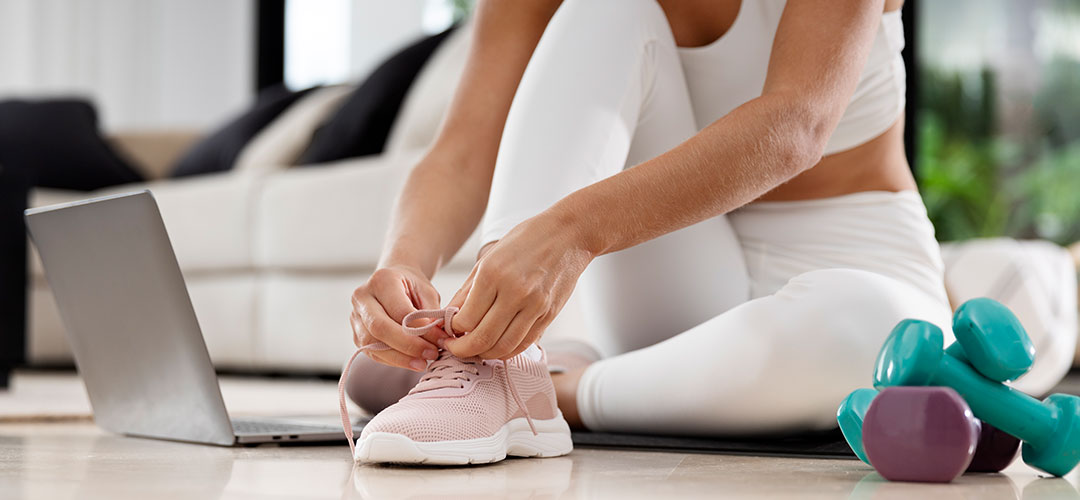
When it comes to staying active while protecting your joints, low-impact exercises offer the perfect balance of movement and safety.
Whether you're managing arthritis, recovering from injury, or simply looking to preserve joint function as you age, incorporating joint-friendly workouts into your routine can reduce stiffness, improve mobility, and build strength without placing undue stress on your knees, hips, or back. In this blog, we explore the top 5 low-impact exercises for joint health and explain why they’re beneficial, how to get started, and what to watch out for.
1. Swimming and Water Aerobics
Swimming is often hailed as one of the best low-impact exercises for joint pain and mobility. The buoyancy of water supports your body weight, dramatically reducing pressure on the joints while allowing for a full range of motion. This makes swimming especially beneficial for individuals with arthritis, fibromyalgia, or post-operative recovery.
Benefits:
- Builds cardiovascular endurance and muscular strength
- Improves flexibility without joint strain
- Helps reduce inflammation and stiffness
How to Start:
Look for community pools or health clubs offering water aerobics classes for arthritis or low-impact water workouts. Even gentle laps in the pool can offer measurable benefits.
2. Walking
Don’t underestimate the power of a brisk walk. Walking is an incredibly accessible and effective form of low-impact cardio that strengthens muscles around your joints, promotes circulation, and supports healthy weight management – all of which can reduce pressure on your knees and hips.
Benefits:
- Easy to adapt to all fitness levels
- Supports bone density and muscle tone
- Helps manage weight, reducing joint stress
Tips for Success:
- Invest in cushioned, supportive footwear
- Stick to flat, even surfaces if you're managing joint instability
- Consider using walking poles for added stability and upper body engagement
3. Cycling (Stationary or Outdoor)
Cycling is a low-impact cardio exercise that works the lower body without the jarring impact of running or jumping. Both stationary bikes and outdoor cycling are excellent for strengthening the quadriceps, hamstrings, and calves – key muscle groups that support the knees.
Benefits:
- Increases joint range of motion
- Builds leg and hip strength
- Gentle on the spine and knees
Getting Started:
Begin with a low resistance setting and gradually increase as your strength improves. Stationary bikes are a safe starting point if you're new to exercise or recovering from injury.
4. Yoga and Pilates
Yoga and Pilates are not only excellent for flexibility and balance but also promote joint stability and muscle strength. These mindful movement practices emphasise alignment, controlled movement, and breath – making them ideal for those with joint concerns.
Benefits:
- Improves joint flexibility and muscular balance
- Enhances posture and core stability
- Reduces stress, which may influence inflammation
Beginner Advice:
Choose classes promoted as gentle yoga, beginner Pilates, or therapeutic yoga for joint health. Always inform your instructor of any physical limitations so they can provide modifications.
5. Resistance Band Training
Strength training is key for joint protection, but traditional weightlifting can sometimes be too intense for those with joint issues. Resistance bands offer a safer alternative, allowing you to build muscle and improve joint stability with controlled, low-impact movements.
Benefits:
- Enhances muscular support around joints
- Reduces risk of injury from free weights
- Portable and versatile for home use
How to Start:
Use light to medium resistance bands and focus on slow, controlled movements. Exercises such as bicep curls, leg lifts, and shoulder rotations can be done seated or standing, depending on your ability.
Why Low-Impact Exercises Matter for Joint Health
Maintaining joint mobility and strength through consistent, gentle movement is one of the most effective ways to delay or manage the symptoms of osteoarthritis and other joint-related conditions. Low-impact exercises for joint health are especially suitable for older adults, people with chronic pain, and anyone looking to future-proof their joints.
Additional Tips:
- Always warm up and cool down to avoid stiffness or strain
- Include flexibility and balance exercises in your weekly routine
- Listen to your body – pain is a signal to rest or modify your approach
Supplements That May Support Joint Health
While exercise plays a crucial role, some people may also benefit from joint health supplements. Look for ingredients such as:
- Glucosamine and chondroitin – naturally found in cartilage, may help support joint structure
- Turmeric/curcumin – may reduce joint inflammation and discomfort
- Collagen – supports connective tissue integrity
- Omega-3 fatty acids – may support healthy joint function and reduce stiffness
Final Thoughts
Whether you're new to fitness or navigating the challenges of arthritis, these top 5 low-impact exercises for joint health offer safe, sustainable ways to keep your body moving and your joints protected. By combining consistent movement with a nutrient-rich diet and supportive supplements, you can maintain joint function, reduce discomfort, and stay active for years to come.
Ready to move better? Explore our range of joint-friendly supplements.
Disclaimer:
Information and other content provided in Lily & Loaf blogs should not be construed as medical advice and should not be considered a substitute for professional medical expertise. If you have any medical concerns, you should consult with your health care provider.






